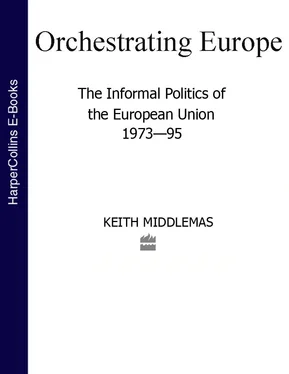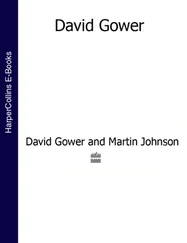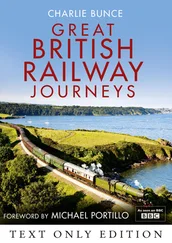A second circumstance also helped to shape the negotiations, although not as decisively as some authors have suggested. In October 1956, together with the British and in collusion with the Israelis, the French launched an attack on Egypt in order to wrest control of the Suez canal from Arab nationalists. The invasion outraged public opinion and attracted the condemnation of both the USSR and the USA. On the brink of achieving their military objectives, the British cancelled operations, leaving both powers tasting the bitter ashes of political defeat. In a gesture loaded with symbolism, Adenauer travelled to Paris for talks with Mollet in the course of which both leaders announced the outlines of the compromise (largely agreed before the Suez crisis) that would set the common market treaty back on its tracks. Suez did not rescue the common market, nor did it finally convince the French government to accept it, but it did convince Spaak that the days of the current French government were numbered. If any treaty were to be certain of ratification, it had to be concluded and presented quickly. As a result, many questions that had not been resolved or that looked unlikely to be resolved quickly were left for the community itself to work out later. This accounts for the odd mixture in the treaty between detailed provisions on some issues and more procedural outlines on others.
At the core of the common market treaty lay the creation of a customs union in three steps, each of four years, with the possibility of a three-year overrun. Spelled out in precise detail, each phase would be marked by the completion of part of the removal of tariffs on intra-area trade and the erection of a common external tariff. With the exception of some troublesome items (list G), the new tariff schedule had also been calculated. By contrast, the details of the agricultural clauses concerned the way in which the steps towards a common policy were to be achieved but said little about the shape of the policy itself. This reflected a realization by the Dutch that if they pressed for more concrete clauses, they would be unlikely to be happy with the outcome. Yet the move was also viewed favourably by federalists, who saw the entrusting of future tasks to community institutions as a positive step towards supranationality. Few at the time paid much attention to the clause at the beginning of the treaty linking progress towards a common agricultural policy at each stage to further progress towards the common market. Yet this link was to form a ‘Junktim’ of its own and to underpin the implementation of both elements in the treaty.
In order to manage the community and steer its future development, the Treaty of Rome modified the supranational structure agreed for the ECSC. A European Commission, headed by independent commissioners chosen by the member states, would have sole rights of initiative across a wide range of policy issues. Only when these had been approved by the European parliament could the Council of Ministers take decisions. Moreover, after the second stage, the Treaty foresaw that the ministers would reach decisions by majority vote rather than by unanimity.
The Treaty of Rome, signed in March 1957, was the product of a society that had already reduced many of the cruder barriers to international trade, that wished to get rid of them altogether and that wanted to ensure they would not re-emerge in the event of a subsequent recession. In addition it reflected an ambition to deal with other competitive distortions (state aid to industry, restrictive practices and other invisible trade barriers) by eliminating them at source. This required a more sophisticated institutional structure than previous inter-governmental organizations. This implication was willingly accepted because the Treaty was seen as more than a simple economic agreement; for some, at least, it carried the hopes for a future federal European state.
2
1958–73 1
The explicitly federal implications of the EEC made it superficially unattractive for the rest of Europe. 2A variety of political, economic or security reasons confined the supranational course initially to a limited group of countries, albeit a group that comprised more than half of western Europe’s output and foreign trade. Nonetheless the outsiders still constituted a sizeable market of considerable sophistication, one that had shared with the Six the same pan-European movement towards commercial liberalization and growing interdependence. Among these smaller trading economies, in particular Denmark, Sweden and Switzerland, there existed the same drive towards a further relaxation of protectionism that had motivated the Benelux countries, and this drive was reinforced by the fear of what might happen once the mutual preferences, implied by the formation of the customs union by the Six, began to take effect. The government of the United Kingdom was particularly concerned about the possibility of an economic division of Europe and, at the end of 1956, tried to neutralize the effect of EEC preferences with a proposal for a wider industrial free trade area to be constructed inside the OEEC.
The initiative was launched at a particularly testing moment for the Six, since the common market negotiations had still to be concluded and then ratified by national parliaments. The Commission of the EC itself did not begin work until January 1958. If the free trade area offered non-member states a solution to their dilemmas, for the Six it posed a distinct threat. Distrust of British motives suffused the following negotiations but there were more prosaic reasons why the Six were reluctant to embrace the UK initiative. For example, the French, in the final stages of the common market negotiations, obtained a set of favourable conditions and safeguards that they could not replicate in the free trade area. Moreover, the French, Italians and the Dutch had obtained some ‘compensation’ for the opening of their industrial markets through the prospect of a common agricultural policy, but agriculture was exempted from the British plan. Finally, those who hoped that the Community institutions would rapidly develop in a federalist direction were worried that their energies might be dissipated by the Free Trade Area.
The Free Trade Area negotiations dragged on for nearly two years, before finally being terminated by the French in November 1958. Under de Gaulle, France had decided to embrace the Treaty of Rome without recourse to its opt-out provisions. This commitment was worth infinitely more to Adenauer than the dubious prospect of a free trade area and thus the move received German acquiesence, if not support. The Commission, especially under its first president Walter Hallstein, had never liked the British plan and was generally pleased to see the back of it. Indeed by the end of the year, among the Six, only the Dutch government and the German economics minister, Ludwig Erhardt, could be numbered amongst its supporters. In the face of the opposing coalition there was little they could do. 3
The failure of the free trade area negotiations left the UK without any coherent strategy towards the Common Market. In the absence of an alternative, the idea of forming a smaller free trade area amongst the ‘outer Seven’ (Britain, Denmark, Norway, Sweden, Switzerland, Austria and Portugal) rapidly took over. With the exception of Austria and Portugal, these were already relatively low tariff countries which shared a desire to maintain tariff autonomy towards third countries. They therefore preferred the concept of a free trade area to solve Europe’s trading problems, rather than the more restrictive principle of a customs union. Formal negotiations started in June 1959 and culminated, in January 1960, in the Stockholm Convention establishing the European Free Trade Association (EFTA). 4
EFTA’s ambitions and its structures were simpler from the start than those adopted by the EEC. It was essentially designed to ‘build a bridge’ to the EEC, thereby obtaining through bilateral negotiations en bloc what the previous multilateral negotiations had failed to deliver. The differences can be summarized as follows:
Читать дальше









![Brian Thompson - A Monkey Among Crocodiles - The Life, Loves and Lawsuits of Mrs Georgina Weldon – a disastrous Victorian [Text only]](/books/704922/brian-thompson-a-monkey-among-crocodiles-the-life-thumb.webp)


